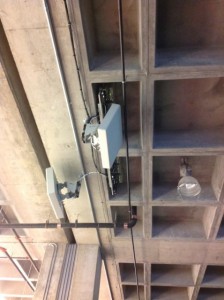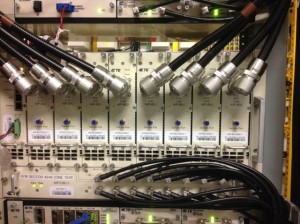Editor’s note: This story is part 2 of a series of profiles of the providers of the extensive Distributed Antenna System (DAS) deployment for Super Bowl XLIX at and around the University of Phoenix Stadium in Glendale, Ariz. and other parts of the Phoenix city area as well. Stay tuned all week as we highlight how DAS will keep Super Bowl fans connected, no matter where they roam in and around Phoenix and Glendale this week and weekend.
Two years ago, the University of Phoenix Stadium had a pretty good distributed antenna system (DAS) network to handle cellular communications inside the building. But with Super Bowl XLIX coming to the Glendale, Ariz., facility this year, pretty good wouldn’t be good enough — so the stadium’s network operators expanded the DAS by almost 50 percent in preparation for the game-day network surge expected on Feb. 1.For fans attending the big game with cellular devices in hand that information may be comforting enough; thanks to a bigger, better DAS that is built to service all the major U.S. wireless carriers, they should have no problem getting a signal. Stadium technology professionals, however, usually want to know more about such expansion plans: What does it really mean to increase DAS capacity? How does that new DAS stack up to others in different stadiums and arenas?
More sectors means more capacity
For the Crown Castle neutral-host DAS at the University of Phoenix Stadium, there is one quick measure of how much the DAS expanded: More sectors. In DAS parlance, a “sector” is an area that has a dedicated amount of base station capacity; for the University of Phoenix Stadium DAS, the number of sectors increased from 33 two years ago to 48 sectors now, according to John Spindler, director for product management at DAS gear maker TE Connectivity. TE’s FlexWave Prism and FlexWave Spectrum DAS gear are part of the infrastructure deployed by neutral host Crown Castle in the UoP network.
Without getting too deep into telecom physics, more sectors in the same amount of space means more capacity. And when it comes to all the different flavors of phones and carrier spectrum, there’s a lot that goes into a DAS to use up that capacity. With all four major U.S. carriers (AT&T, Verizon Wireless, Sprint and T-Mobile) using the DAS, the infrastructure must support a full range of cellular spectrum, from 700 MHz LTE signals to LTE, CDMA, UMTS and EVDO signals in the 800 MHz, 850 MHz, 1900 MHz and 2100 MHz bands. The DAS inside the stadium will use 228 remote antenna units, according to Crown Castle.“More frequencies, more MIMO [multiple-in, multiple-out antenna-enhancement technology] and heavier sectoring,” is how Spindler described the general needs for most DAS upgrades, and for the UoP DAS, where Spindler foresees another big number for Super Bowl stadium DAS traffic on Feb. 1.
“I would expect to see record [DAS] numbers,” Spindler said.
One DAS to rule them all
Last year, the DAS situation at MetLife Stadium in New Jersey was especially tough to explain, since both AT&T and Verizon built their own separate infrastructures. According to AT&T its DAS customers at Super Bowl XLVIII used 624 gigabytes of traffic, a record then but a figure that has been surpassed many times this past football season at both college and pro football venues (the recent College Football Playoff championship game, for instance, saw 1.4 TB of DAS traffic for AT&T customers at AT&T Stadium). Verizon claimed last year that its customers used 1.9 TB of wireless data during the Super Bowl, but Verizon never provided specifics whether that number represented just DAS traffic, or Verizon customer usage of the MetLife Wi-Fi network as well.Either way, the guess is that the DAS at the University of Phoenix Stadium will set new Super Bowl traffic records on Feb. 1, and by all accounts the infrastructure seems ready to handle it. Spindler, for one, said the Crown Castle DAS is “definitely well designed.” And Travis Bugh, senior wireless consultant for CDW (which installed the new Wi-Fi system at UoP), said he was also impressed by the performance of the Crown Castle DAS, which he said seems more than ready for the coming Super Bowl crush.
NEXT: What are the carriers doing to supplement the DAS coverage?










I noticed CommScope (“Andrew” labeled) oDAS equipment near the stadium as well.
How much CommScope equipment is part of the overall project? It looks like TE is taking full credit for the stadium and environs but I wonder about the Andrew gear in identical housings.
Michael, thanks for the eagle eye spotting. Haven’t gotten any official confirmation about the total product mix. I disagree with your take that TE is taking “full credit,” they just had a press release saying they were part of the deployment.
We try to ask for as specific details as possible but as you know not everybody in a deployment is always at liberty or willing to disclose all those details.